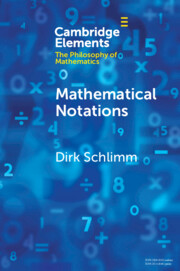Element contents
Mathematical Notations
Published online by Cambridge University Press: 30 January 2025
Summary
Keywords
- Type
- Element
- Information
- Online ISBN: 9781009472128Publisher: Cambridge University PressPrint publication: 30 January 2025
References
 .’ Review of Symbolic Logic, 16(3):862–899.CrossRefGoogle Scholar
.’ Review of Symbolic Logic, 16(3):862–899.CrossRefGoogle Scholar
